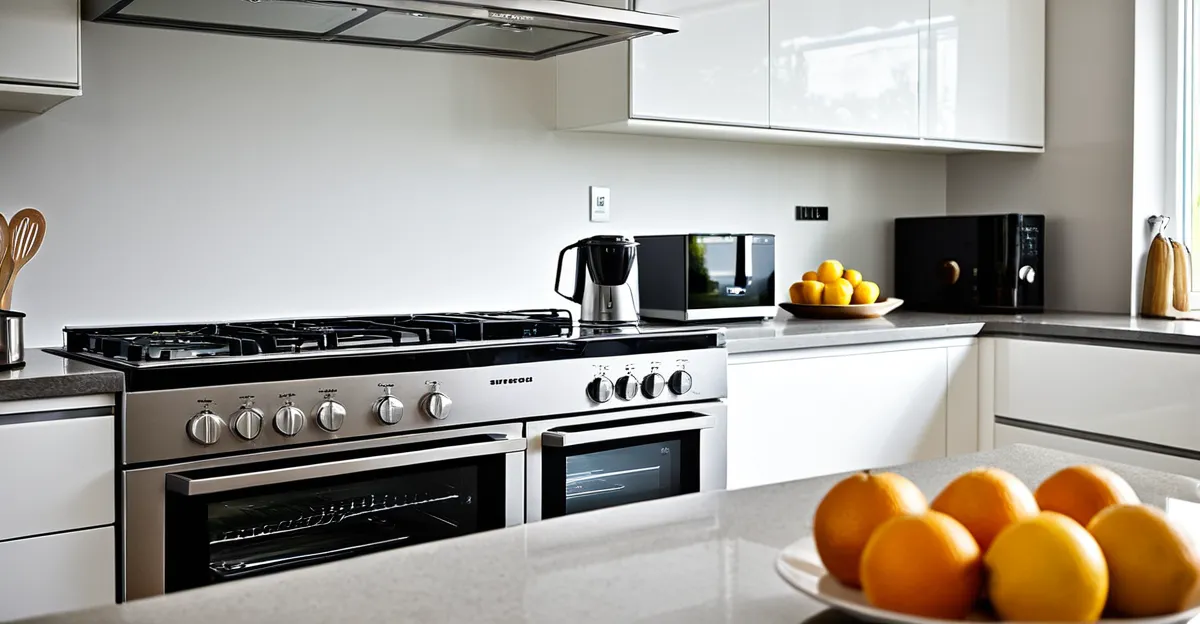Common Hidden Costs When Buying Kitchen Appliances in the UK
When buying kitchen appliances in the UK, many shoppers focus on the upfront price while overlooking hidden costs for kitchen appliances UK. These unexpected expenses can significantly impact your budget.
One of the most common unexpected appliance expenses UK is delivery fees. Retail prices often exclude shipping charges, especially if the item is large or comes from a different region. Always verify if delivery is included or if you must pay extra. Installation and fitting services are another source of hidden costs. While some retailers bundle installation with purchase, many charge additional fees — particularly for complex setups like built-in ovens or integrated dishwashers.
Additional reading : How Can You Identify the Best UK Kitchen Offers?
Recycling and disposal fees for old appliances also add to your total expenditure. UK regulations encourage responsible disposal, which means retailers may require payment for taking away and recycling your existing appliances. This cost is usually separate from delivery and installation and can add a surprising amount to your final bill.
Awareness of these hidden costs can help you avoid budget surprises. When buying kitchen appliances, ask retailers upfront about delivery, installation, and disposal fees. Developing a clear understanding of all potential expenses ensures you are prepared financially and can make an informed decision.
Also read : What Are the Top Bargain Products for a British Kitchen Makeover?
Additional Expenses Beyond Purchase Price
When purchasing kitchen appliances, it’s crucial to consider additional expenses beyond the initial purchase price. Many consumers overlook the importance of appliance extended warranties UK offers, which provide extra protection against unforeseen faults. While these warranties can add upfront costs, they may save money over time by covering repairs that standard warranties exclude.
Additionally, some sellers require buyers to purchase kitchen appliance insurance as part of the deal, which guards against accidental damage or breakdowns. This insurance can vary in coverage and cost, so understanding its terms is vital before committing.
Maintenance costs also contribute to ongoing expenses. Appliances require regular servicing to ensure optimal performance, which incurs both parts and labour charges. Standard warranties typically cover manufacturing defects but exclude call-out and labour charges, which homeowners must pay out-of-pocket when repairs are needed. These charges can be significant, especially if the appliance is out of warranty or the issue is due to wear and tear.
By accounting for maintenance costs, extended warranties, and possible insurance policies, consumers gain a clearer picture of the total cost of ownership for kitchen appliances, helping them make more informed decisions.
Energy Efficiency and Long-Term Financial Impact
Understanding the balance between upfront costs and ongoing savings
Choosing energy efficiency appliances UK can significantly reduce household energy bills over time. Although low-efficiency models might have a lower purchase price, their higher running costs accumulate quickly, leading to inflated monthly expenses. Conversely, investing in eco kitchen appliances often means initial higher spending but results in meaningful long-term savings. These appliances use advanced technologies to minimise energy consumption without compromising performance.
Manufacturers’ energy ratings, especially those applicable in the UK market, provide clear guidance. These ratings indicate the appliance’s power usage relative to standard benchmarks. For example, an A+++ rated refrigerator can use up to 60% less energy compared to lower-rated alternatives. Such information helps consumers make informed choices aligned with their energy-saving goals.
It’s essential to consider that even small reductions in energy consumption contribute to noticeable financial relief on household energy bills across a year. For instance, a washing machine with a top energy rating can use less electricity and water, further enhancing savings. Ultimately, selecting energy efficiency appliances UK not only benefits your wallet but also supports environmental sustainability by lowering overall carbon footprint.
How to Minimise and Avoid Extra Appliance Costs
Finding ways to save money on kitchen appliances in the UK starts with careful retailer comparisons. Look beyond just the price tag. Many retailers include valuable extras like free delivery and installation. These services can add up if paid separately, so choosing stores that bundle them helps you minimise appliance fees in the UK effectively. Also, check if returns and recycling services come at no extra cost, which avoids unexpected fees down the line.
UK government recycling schemes offer a practical solution to reduce disposal expenses when buying new appliances. Local councils often run collection or exchange programs that can save you both money and hassle. Participation in these schemes ensures environmentally friendly disposal while avoiding additional charges, a smart move when managing your appliance budget.
Evaluating warranty value is critical. Paying a bit more upfront for appliances with comprehensive and reliable warranties often means fewer repair costs later. Selecting trusted brands known for durability translates into longer-lasting products, minimising appliance fees UK consumers face over time. Research is key here; prioritise appliances with good after-sales support to save in the long run.
In summary, combining informed buying, recycling options, and strong warranties empowers you to keep appliance-related costs down while upgrading your kitchen efficiently.



